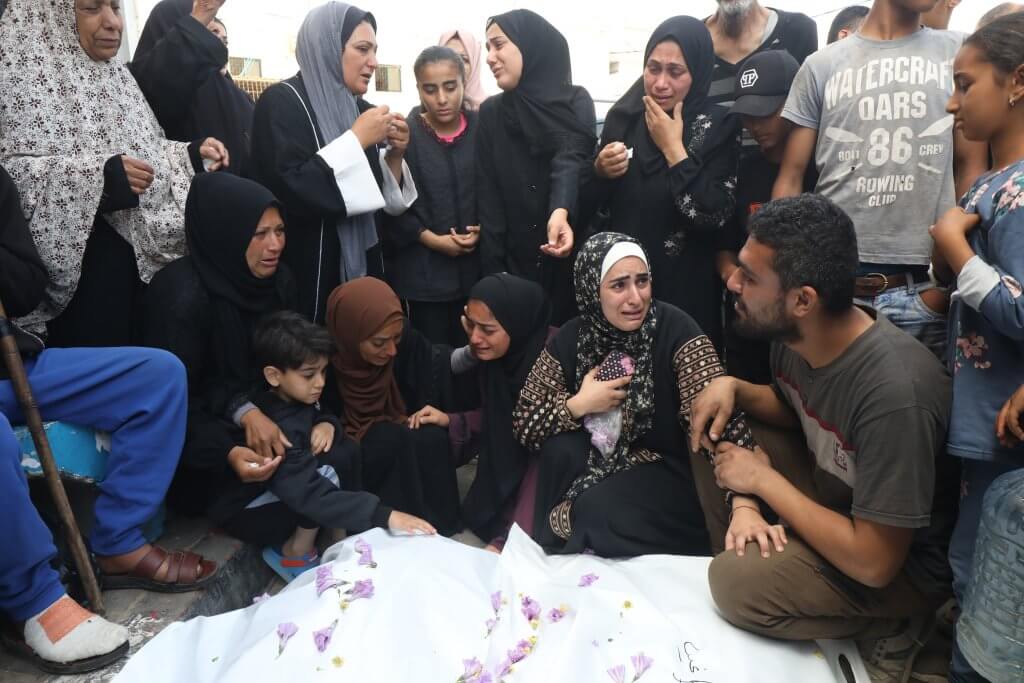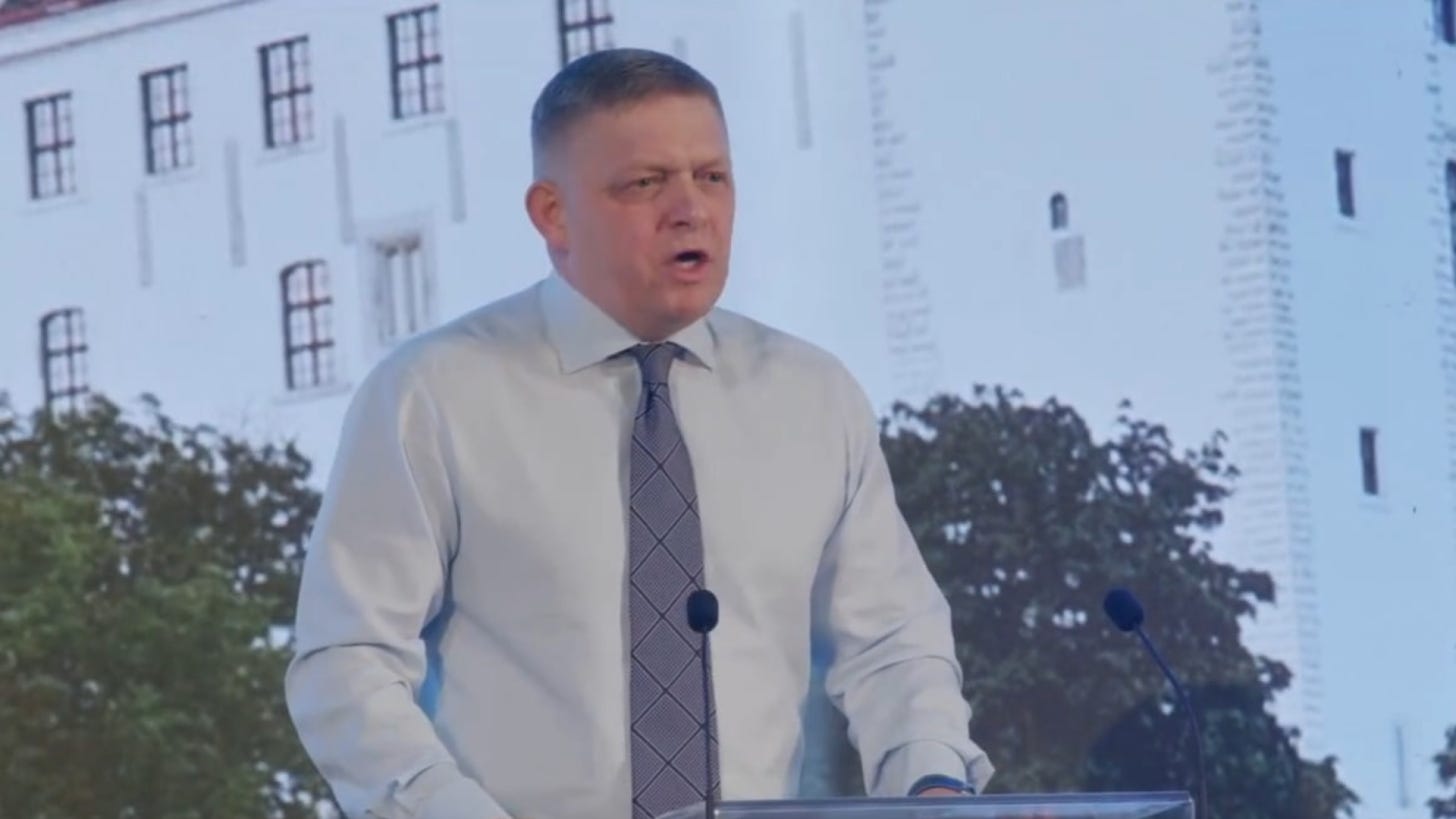‘Operation al-Aqsa Flood’ Day 206: Blinken says Israel has no plan to ensure civilian safety in Rafah
Palestinians brace for an invasion in Rafah as Hamas is expected to respond to a new ceasefire proposal. Meanwhile, Israel continues airstrikes on Gaza, and Gaza City’s municipality says that half of its water wells have been destroyed.

Casualties
- 34,488 + killed* and at least 77,643 wounded in the Gaza Strip.*
- 487+ Palestinians killed in the occupied West Bank and East Jerusalem.**
- Israel revises its estimated October 7 death toll down from 1,400 to 1,139.
- 607 Israeli soldiers have been killed since October 7, and at least 6,800 injured.***
*Gaza’s Ministry of Health confirmed this figure on its Telegram channel on April 29, 2024. Some rights groups estimate the death toll to be much higher when accounting for those presumed dead.
** The death toll in the West Bank and Jerusalem is not updated regularly. According to the PA’s Ministry of Health on April 22, this is the latest figure.
*** This figure is released by the Israeli military, showing the soldiers whose names “were allowed to be published.” The number of Israeli soldiers wounded is according to Israeli media reports.
Key Developments
- Israel kills 183 Palestinians, wounds 350 since Friday across Gaza, raising the death toll since October 7 to 34,488 and the number of wounded to 77,643, according to the Gaza health ministry.
- U.S. Secretary of State Antony Blinken says Israel hasn’t presented a credible plan to guarantee the safety of civilians in the case of a Rafah invasion.
- Blinken says that without a plan for civilian safety, the U.S. can’t support a Rafah invasion.
- Hamas delegation arrives in Cairo to deliver the group’s response to the latest Israeli ceasefire proposal.
- Israeli media reports three Israeli soldiers killed and 11 wounded in an ambush by Palestinian fighters in central Gaza near the Netzarim corridor.
- Tens of rockets fired on northern Galilee from southern Lebanon. Hamas claims responsibility.
- The Gaza municipality says that half of the water wells in the city have been destroyed by Israeli forces.
- The Chinese foreign minister says that what is happening in Gaza is “unacceptable to human conscience,” calls for an international peace conference to solve the Palestinian crisis.
- Over 200 Israeli settlers storm the al-Aqsa compound on Monday.
Israel kills 183 Palestinians since Friday
The Gaza-based Palestinian health ministry announced that the remaining hospitals in the Gaza Strip received 183 Palestinians who were killed in Israeli strikes since Monday, while 350 others were wounded.
Meanwhile, local media sources reported that Israeli forces conducted air strikes and artillery shellings across the strip over the week, including of family homes, residential neighborhoods, and the vicinity of a school used as a refuge by displaced families in Gaza City.
On Monday, Israeli media outlets reported that at least three Israeli soldiers were killed and 11 were wounded in combat against Palestinian resistance groups in central Gaza.
The al-Qassam Brigades, the armed wing of Hamas, had earlier announced that they ambushed Israeli forces in the Netzarim corridor, the buffer zone that Israeli forces have been creating dividing the north of the Gaza Strip from its south. The al-Qassam Brigades also announced that they used unexploded Israeli bombs in the ambush.
In the past 24 hours, Israeli forces killed three Palestinians in a strike on the Sabra neighborhood in Gaza City. An unknown number of Palestinians were also reported in strikes on houses in al-Shati’ refugee camp, west of Gaza City, and on al-Jalaa Street.
In the central Gaza Strip, Israeli strikes targeted the Nuseirat refugee camp, the main target of Israeli strikes in the past weeks, and the Juhr al-Deek neighborhood in Deir al-Balah.
In the southern Gaza Strip, 29 Palestinians were reported killed by Israeli strikes, including 22 in strikes on three family houses. In Khan Younis, Palestinian Civil Defense teams recovered 16 new dead bodies from across the city since Saturday, adding to 392 recovered last week in mass graves near the Nasser hospital in the city.
Blinken says that Israel hasn’t provided a credible plan to guarantee civilian safety in Rafah
U.S. Secretary of State Antony Blinken said on Monday that the Middle East is experiencing its “worst crisis since 1948,” adding that the U.S. is working with countries in the region to achieve a ceasefire in Gaza.
Blinken’s remarks came at the World Economic Forum in Riyadh as part of a visit to the region. Blinken said that the U.S. hasn’t seen a “credible Israeli plan” to ensure the safety of around 1.5 million Palestinian civilians taking refuge in Rafah in the case of an Israeli invasion of the southernmost district in Gaza. The U.S. diplomat added that Washington would not support an invasion of Rafah without such a plan.
Blinken also said that the U.S. hopes that Hamas will accept the latest Israeli offer for a ceasefire and prisoner release deal, which he described as “generous.”
At the same forum, the Jordanian foreign minister, Ayman al-Safadi, said that “Netanyahu should not be allowed to destroy the region,” adding that the Israeli Prime Minister “clearly doesn’t want peace.” Al-Safadi added that there are now 7,000 Israeli settlements, which has “destroy[ed] the two-state solution.”
Meanwhile, Egyptian foreign minister Sameh Shukri said that “the international community rejects a military solution in Rafah,” pointing out that Egypt, which is an intermediate in the easefire talks alongside Qatar, “expects all parties to consider” the ceasefire proposals that are on the table.
Rafah has become the refuge of hundreds of thousands of Palestinians who Israel forced out of the northern Gaza Strip since October. Earlier in April, the Qatari Prime Minister said that the ceasefire talks were stuck at Israel’s refusal to allow the Palestinian displaced from northern Gaza to return to their homes. Currently, some 600,000 Palestinians remain in the north, including in Gaza City, without medical services and with a severe lack of food, water, and humanitarian supplies.
Gaza’s municipality says that half of the water wells in the city have been destroyed
Gaza City’s municipality said in a statement on Sunday that 50% of the water wells in the city have been destroyed by Israeli strikes since October.
The municipality added that around 42,000 meters of water pipelines have also been destroyed, leaving many municipalities in the northern Gaza Strip without water access. The statement pointed out that in addition to the destruction of water infrastructure, Gaza’s municipalities lack fuel to operate the remaining wells.
Meanwhile, the Gaza-based Palestinian health ministry said that the remaining medicine fridges in the northern Gaza Strip are at risk of stopping due to the lack of fuel, risking the deterioration of the already insufficient medicine supplies in the area. The ministry added that the lack of fuel also threatens the work of the only remaining oxygen plant in all of the Gaza Strip, which provides oxygen to the remaining hospitals and health centers, chronic patients, and ambulances.
Last week, the ministry announced that over 600,000 Palestinians who remain in the north are practically left without health services, following Israel’s complete destruction of al-Shifa Hospital, Gaza’s largest and main medical complex, in early April.


No comments:
Post a Comment